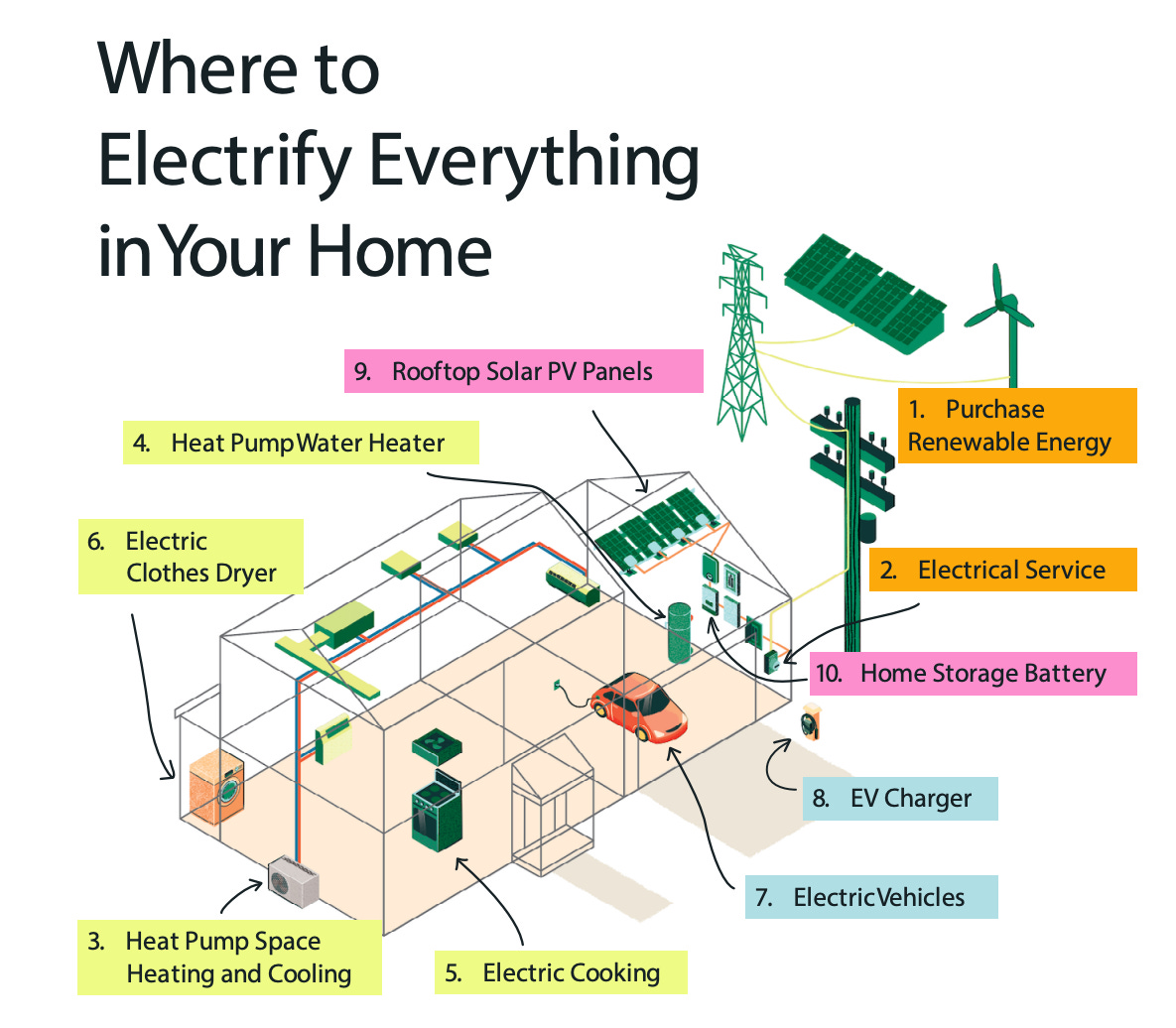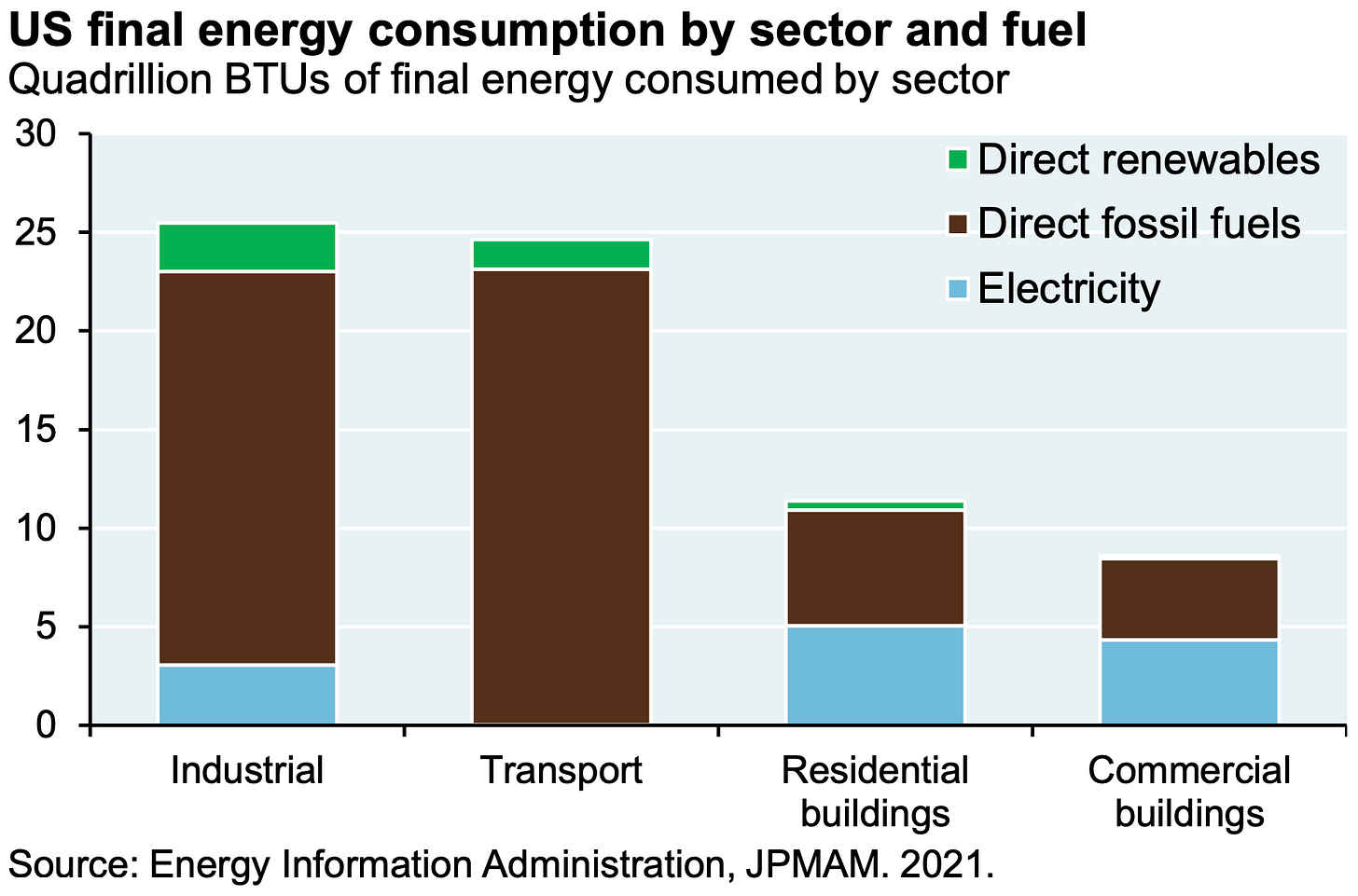Energy Raven: Catalyzing home electrification
The home buying process as a catalyst for residential electrification
Energy Raven is a climate tech platform with a brilliant insight on catalyzing homeowner action for home energy electrification.
They hired us to build out their 0-to-1 MVP app, so we’ve got the insider’s view into their software architecture. We helped them get crisp on the exact problem they were solving and narrow in on the minimum (!) software needed to get the job done.
Why the minimum? See our previous post:
In this case study, as in so many climate solutions, we zoom in on one specific source of fossil fuel consumption and ask: how we can make this go away?
In this case, we’re looking at direct fossil fuel consumption in residential buildings. To fight the climate crisis, we need to electrify homes and upgrade them to use less energy overall — we need to turn that little brown bar (representing 5+ quadrillion BTUs of fossil-fueled energy consumption) into blue or green!

Saul Griffith and the folks at Rewiring America have a campaign to “Electrify Everything.” The biggest 3 things a homeowner can do to fight climate change on an individual level are to:
Install rooftop solar
Get an electric heat pump heater (bonus: electrify other appliances)
Drive an EV
However, despite a clear problem and concrete solutions, the residential energy transition is slow. Why?
The problem
Well, a residential energy transition requires homeowners to take action to perform these home energy retrofits, and they either:
aren’t aware of options
are turned off by price tag
lack activation energy
An in-depth study into Homeowner Decision Making and Behavior Relating to Deep Home Retrofits found that: “Neither the existence of energy-saving technologies nor the capability to achieve substantial energy savings automatically translate into homeowner action”
Basically, even when homeowners know that options exist, they still need the activation energy to actually explore and make the changes.
The insight
The folks at Energy Raven had a big insight:
The home buying process could be a catalyst for home energy upgrades
This is a moment when the prospective homebuyer is looking to make a major investment, a time when they’ll be open to suggestions and have a bigger appetite for big ticket spending. They’re also likely to value information about operating costs of the home. (In the United States, operating cost information is still largely absent from home listings.)
The solution
Energy Raven produces a home energy performance report during home inspection.
In the U.S., most homes under contract receive an inspection from a licensed inspector. This inspection is focused on identifying structural and appliance issues; the inspectors are not trained to analyze energy usage.
Energy Raven fills that knowledge gap. The Energy Raven app takes what the home inspector knows and augments it, and then provides the homebuyer with information on likely home performance and potential wallet-wise and climate-saving upgrades.
This app matches a common pattern we see in climate software—building off public datasets, sprinkling in proprietary secret sauce, and wrapping it up in a modern web app. Let’s take a look!
The software
The Energy Raven app guides home inspectors to collect energy-specific data on the home and combines this with existing public and commercial datasets to generate a home energy performance report, which is presented to prospective home buyers in a web app.
The components:
Home inspection
Public data
Energy modeling engine
Web app
Home inspection
The inspector submits a completed inspection report to Energy Raven, and the software extracts the energy-relevant data points.
Public (and commercial) data
The app bolsters the data collected during the home inspection with public and commercial data available both on the specific home, and on a statistically representative spread of homes in general.

Energy modeling engine
On the backend, the collected and public data are input into an energy modeling engine. This modeling engine is itself built around a public tool: the US Department of Energy (DOE) EnergyPlus / Open Studio energy modeling physics engine. The modeling engine wraps this up in a docker container and deploys it on standard cloud infrastructure.

The modeling process is time- and CPU-intensive, and therefore runs asynchronously, notifying the homebuyer via email when the energy performance report is ready.
Web app
The energy report is presented in a fairly vanilla web app, built on React, Typescript, and Node.
In conclusion..
Combining existing (often public) datasets with proprietary secret sauce and packaging into a basic web application is a pattern we see often in climate tech. There is a wealth of publicly available climate-relevant data: weather, energy consumption and generation, land usage, and so on.
Taking public data and turning it into actionable insight is a win-win-win: for the company, the customer, and the climate!





